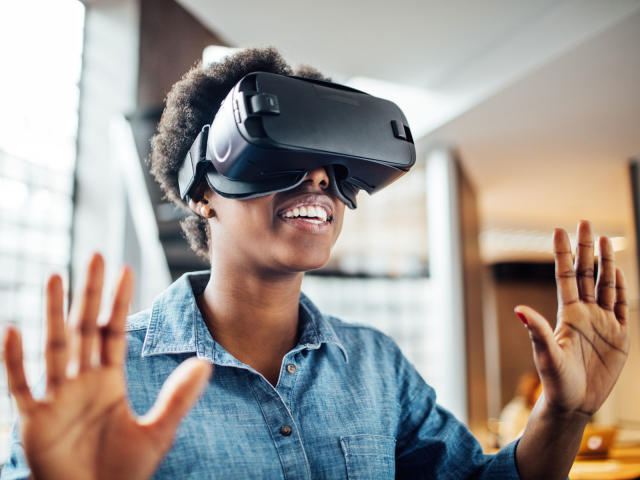In a world increasingly dominated by digital advancements, Augmented Reality (AR) and Virtual Reality (VR) stand at the forefront, promising unparalleled immersive experiences. These cutting-edge technologies have transcended the realm of mere entertainment, permeating various industries and reshaping the way we interact with the world. This article delves into the depths of AR and VR, unraveling their potential and exploring the boundaries of immersive experiences.
Understanding Augmented Reality (AR)
Definition and Core Concepts
Augmented Reality is the integration of digital information with the user’s environment in real-time. Unlike Virtual Reality, which creates an entirely artificial environment, AR overlays digital content onto the real world. This fusion enhances the user’s perception of reality, offering a seamless blend of the physical and digital realms.
Applications Across Industries
AR has found applications across diverse sectors, from healthcare to education, gaming, and beyond. In healthcare, for instance, AR facilitates surgeries by providing surgeons with real-time data and 3D visualizations. In education, AR enhances learning experiences through interactive and dynamic content. The gaming industry has embraced AR to create captivating and interactive gaming environments.
Navigating the Virtual Landscape: Virtual Reality (VR)
Definition and Key Components
Virtual Reality, on the other hand, immerses users in a completely artificial environment generated by a computer. This simulation is achieved through the use of VR headsets, which block out the physical world and replace it with a digital one. VR goes beyond visual experiences, often incorporating auditory and tactile elements to create a truly immersive virtual world.
Transformative Applications
The applications of VR are wide-ranging and transformative. In the realm of business, VR facilitates virtual meetings, product prototyping, and employee training. In the field of architecture and design, VR enables professionals to walk through virtual spaces before construction begins. Additionally, VR has proven to be a powerful tool in therapy, aiding individuals in overcoming fears and phobias through controlled virtual environments. Please visit the official site to get more important information about technology.

The Synergy of AR and VR: Unleashing Immersive Potential
While AR and VR offer distinctive experiences, their combination unlocks a new dimension of immersion. This synergy has significant implications for industries such as retail, where customers can virtually try on products before purchasing. In tourism, AR and VR can provide virtual tours, allowing users to explore destinations from the comfort of their homes.
Future Trends and Challenges
As AR and VR continue to evolve, several trends and challenges shape their trajectory. The development of more affordable and accessible hardware, advancements in gesture recognition technology, and the integration of 5G connectivity are poised to propel these technologies to new heights. However, challenges such as privacy concerns, motion sickness in VR, and the need for standardization must be addressed to ensure widespread adoption.
Conclusion: Beyond the Horizon of Immersion
In conclusion, Augmented Reality and Virtual Reality represent more than technological novelties; they are transformative forces reshaping our reality. From enhancing daily experiences to revolutionizing industries, the potential of AR and VR is boundless. As we navigate the boundaries of immersive experiences, it’s evident that we stand at the threshold of a new era, where the digital and physical worlds converge seamlessly.





